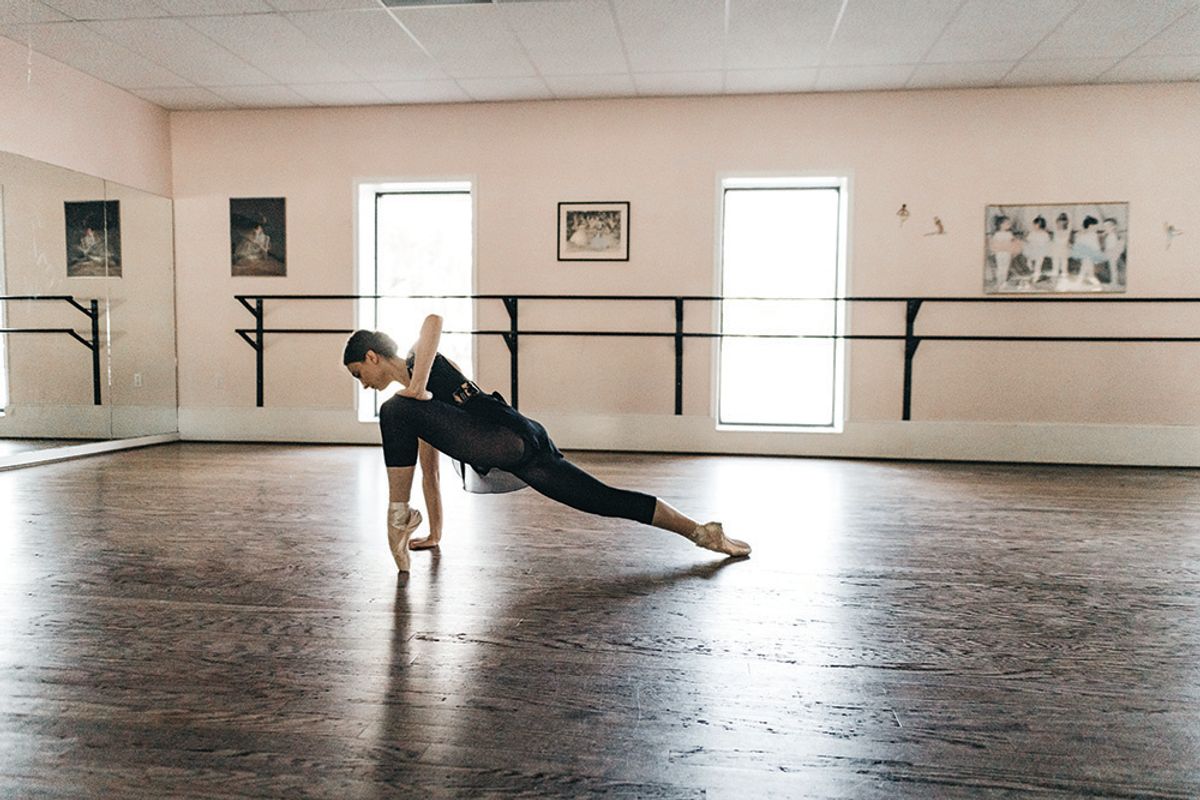
Paying for college, no matter what degree you graduate with, is a challenge for many students and their families. But majoring in dance has its own set of complications, because many are reluctant to go into serious debt without the security of knowing they’ll be able to pay that debt off quickly post-college. That doesn’t mean a dance degree is out of the question, of course—as the three dancers featured here demonstrate.
Finding a Dream Program Close to Home
Casey Copeland, sophomore
Florida State University
Tallahassee, FL
When Casey Copeland entered FSU as a dance major, she had a goal: Graduate without debt. With some very strategic planning, she’s currently on track to do just that, as she ends her sophomore year.
While in high school, Copeland qualified for a Florida state program called Bright Futures, which offers eligible students awards to cover either 75 or 100 percent of tuition costs. Because Copeland met the criteria for the highest tier of the Bright Futures awards—a 3.5 grade point average, 29 on the ACT or 1290 on the SAT, and 100 completed service hours—100 percent of her tuition would be covered at any in-state school.
Because she had attended summer intensives at FSU, Copeland knew that’s where she wanted to earn her BFA in dance. But there were other costs to take into account, like room and board. Fortunately, Copeland had a plan. “If you live within a 50-mile radius of the campus, you don’t have to live on campus,” she says. “I happen to live exactly 50 miles away.” By continuing to live at home (and commuting an hour and 15 minutes each way, every day), she was able to forgo room-and-board costs.
Though she’s currently rehearsing three hours a week, Copeland also maintains a teaching and artistic director position at her home studio in Perry, Florida. She devotes about 10 hours a week to the studio, where she teaches advanced ballet, pointe and advanced contemporary, and holds private lessons. Her position as artistic director—she plans the end-of-the-year recital—allows her to use space at the studio for privates rent-free.
Balancing Work-Study
Mary Kate Ford, junior
University of Illinois
Urbana-Champaign, IL
As a native of Louisville, Kentucky, Mary Kate Ford knew her first-choice dance program at the University of Illinois would be an expensive venture. Though she received a talent scholarship from the dance department that would cover a significant portion of the estimated $45,000 annual tuition, it wasn’t enough. Ford chose to defer for a year. She spent that time working two jobs in the service industry, at a coffee shop and a restaurant, saving up as much money as she could.
She thought she had it figured out by the time she matriculated in the fall of 2016, but she hadn’t factored in the university’s rule requiring out-of-state freshmen to live in a dorm and pay for a meal plan—adding about $11,000 to her tab.
By the end of her freshman year, she needed to come up with $10,000 in order to register for classes the following fall. She spent the summer working full-time in Louisville but only managed to earn $6,000. “I was pretty devastated that I didn’t have enough,” says Ford. In a moment of desperation, she created a GoFundMe account—and within a week, she’d raised the remaining $4,000. “I was really overwhelmed by the number of people who wanted to help,” she says.
Before the start of her sophomore year, Ford appealed to apply again for student loans and grants as an independent student to help fund tuition for the next three years. She found the best rates were offered through the university (as opposed to private bank loans), and interest doesn’t begin to accrue until after graduation.
Ford still works 17 to 25 hours a week, entirely on the weekends, reserving weekdays for classes and rehearsals. “It’s exhausting,” she says. “Once I start the semester, unless it’s a holiday, I don’t have a day off.” Though it would be easy for her to burn out, majoring in dance, she says, is what gives her the energy and will to keep going.
Turning Competition Wins Into Scholarship Funds
Sarah Pippin, junior
The Juilliard School
New York, NY
Sarah Pippin grew up at Christy Curtis’ North Carolina studio, CC & Co. Dance Complex, racking up major awards at competitions like New York City Dance Alliance—national mini, junior and senior female outstanding dancer, for example. But it wasn’t until she won the NYCDA Foundation’s Dance Magazine college scholarship—worth $25,000 and awarded to only one dancer each year—that her dream to attend Juilliard became a reality. She’d attended Juilliard’s summer intensive as a high school student and fallen in love with the program, but it came with an annual price tag of $65,000 for tuition, room and board. Her NYCDA scholarship put a small dent in that figure, but Juilliard also offered her a scholarship to cover about 60 percent of her tuition. Her parents stepped in to cover the rest.
Though she routinely has an 8- to 12-hour dance day, with class and rehearsal, she also holds a work-study job that, luckily, allows her flexibility in scheduling. “I’m on the campus activities board at school, and we organize various events,” she says. “On average, I’m working between 2 and 10 hours a week.”




